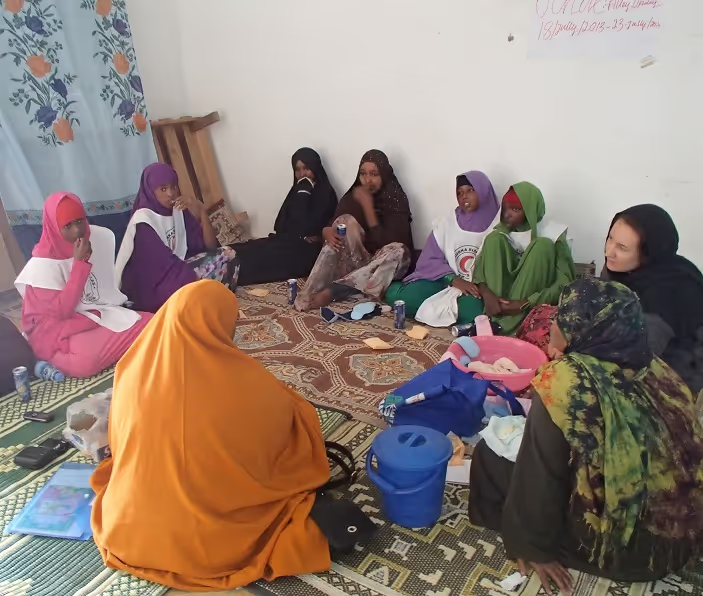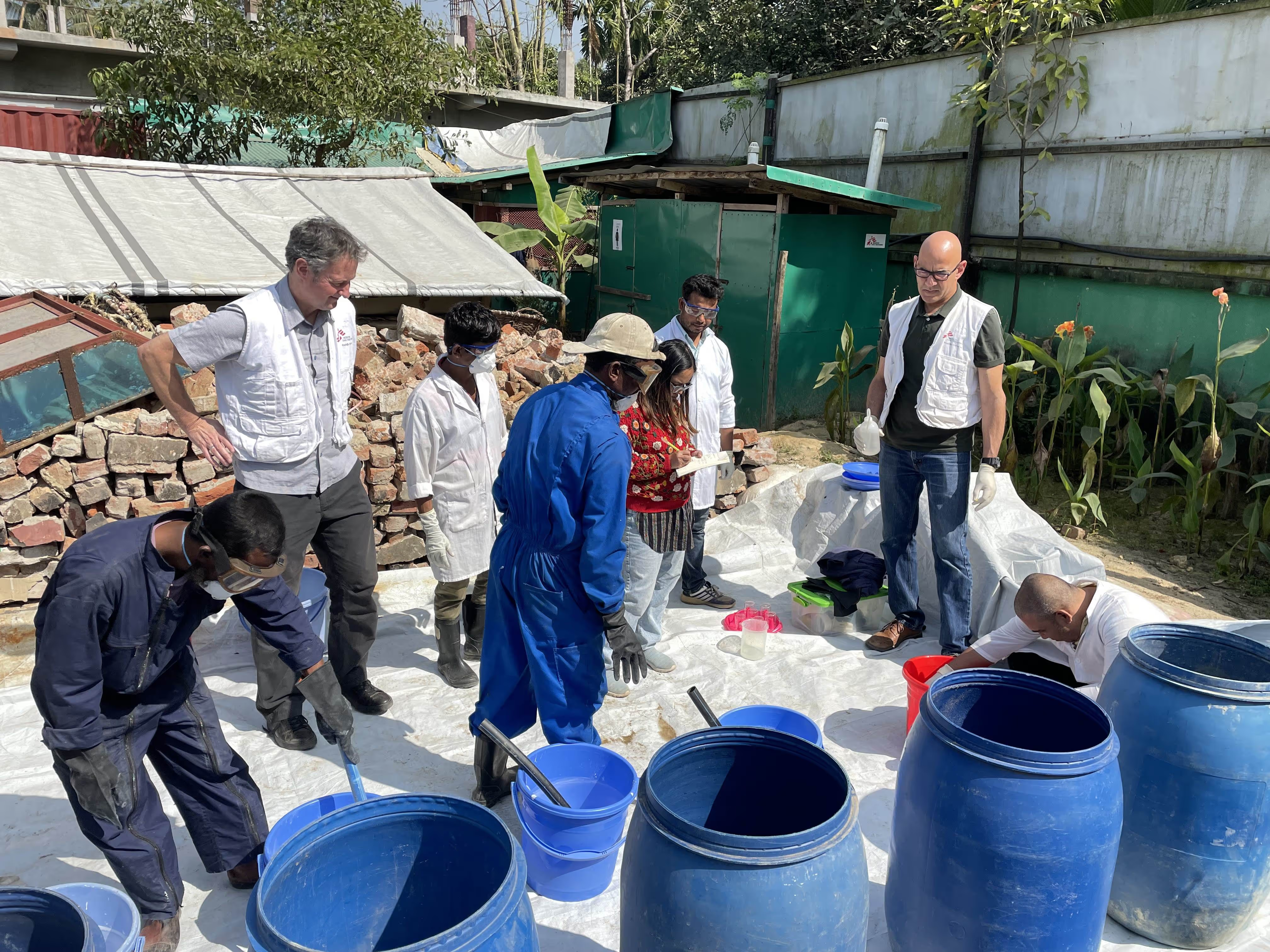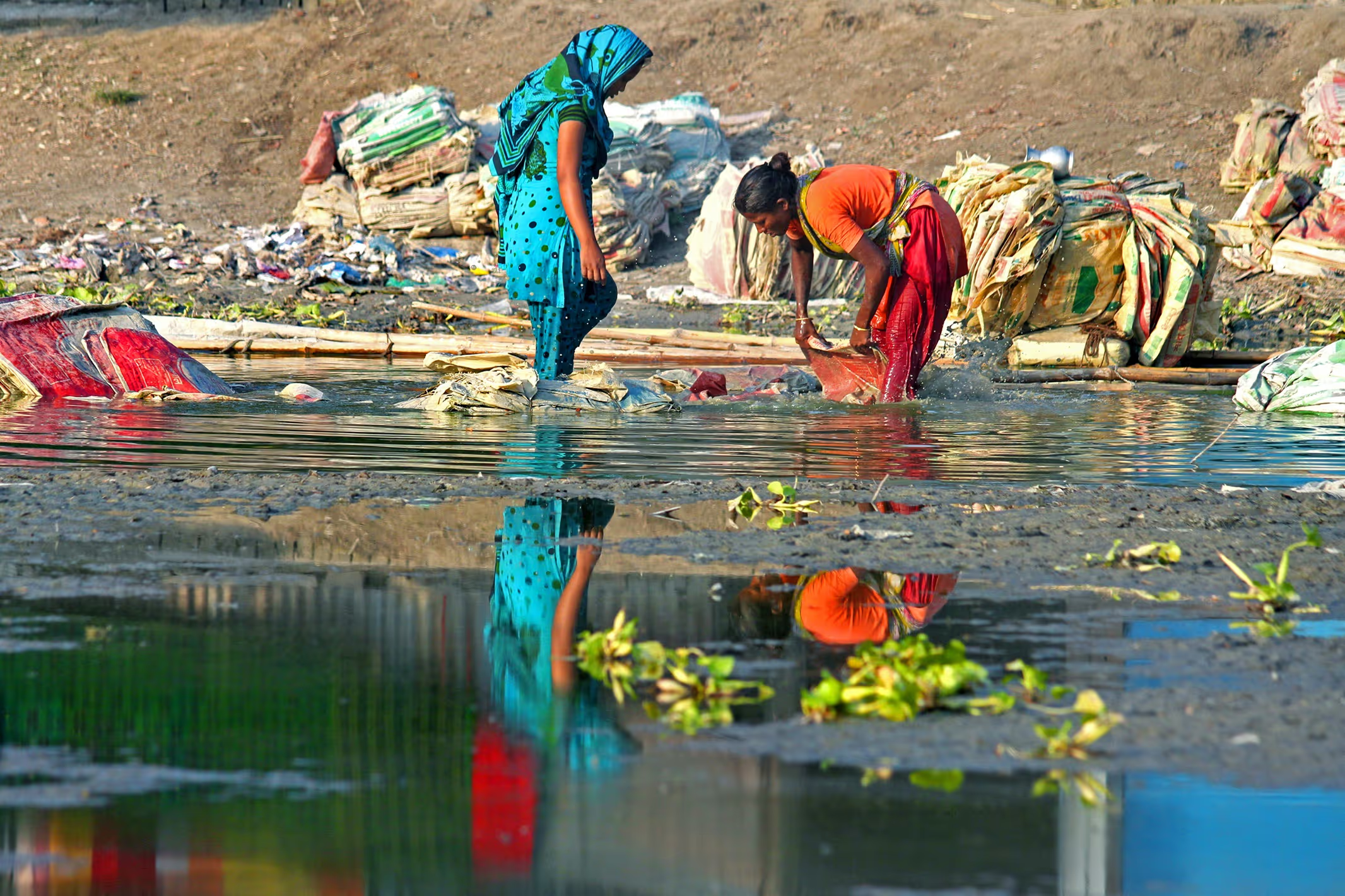Understanding the menstrual hygiene practices of Somali and South Sudanese refugees

The IFRC’s project on Menstrual Hygiene Management (MHM) in emergencies is well underway. Menstrual hygiene in emergency situations continues to be a great concern; although it is often overlooked and not addressed adequately. Though sanitary pads are not considered a life-saving item, they play a crucial role around important issues such as dignity, hygiene and health, education, protection and security of women and adolescent girls in emergencies.
The IFRC’s project aims to scale-up appropriate and effective tools for MHM in an emergency context – including the trial of MHM Kits as a relief item in three different contexts – Somalia, northern Uganda (with South Sudanese refugees) and southern Madagascar.
Focus group discussions (FGDs) with women and adolescent girls are the first step toward understanding the practices, challenges, perceptions and restrictions surrounding menstruation and menstrual hygiene in a certain population.
The type of sanitary material used, preferences, hygiene practices, attitude and knowledge around menstruation can be vastly different for a 15 year old adolescent compared to a 40 year old woman. For this reason, and to support open conversation with confidence, women and girls were separated into three age groups: 12 to 18 years, 19 to 34 years, and 35 to 50 years.
With groups of 8 to 10 participants, Red Cross and Red Crescent staff and volunteers facilitated open discussion about MHM practices, experiences, knowledge, preference and challenges. This photo shows one of the FGDs in Somaliland.
In Somaliland, women and girls generally use cloth without underwear to absorb their monthly flow. Movement is very restricted, with many staying inside the house for the days they are bleeding – which greatly affects daily life (e.g. difficult to collect water, go to school, go to market etc.). When water is scarce, it is not possible to wash the cloth before re-using it. Sometimes cloth is kept until the rainy season when it can be washed – or the dirty cloth is burnt or buried. Interestingly, women and girls did not ever throw dirty cloth on the ground or in the open, because “the goats and camels will eat it and become very sick!” Female genital mutilation is common in Somaliland – this has huge negative effects on the day to day life of women and girls particularly during menstruation as the menstrual flow is restricted and bleeding lasts longer, as well as causing pain, swelling and regular infections.
In northern Uganda, South Sudanese refugees who fled conflict in their home country and are now living in Arua or Adjumani settlements are the target population. Most women and girls use cut-up cloth or fabric to absorb their monthly flow. Water is an issue, and most have to spend many hours by the river washing the cloth and hiding away from others in case blood leaks through their clothes. Privacy is an issue: men and women use the same latrines, and bathing areas are scarce. In the Dinka culture, if a women has her period she cannot give food to elders, cannot drink milk, and cannot be near the fire (so cannot cook).
Information and key findings from these FGDs has informed the baseline KAP (knowledge, attitude and practices) survey and final MHM kit content. The baseline surveys have been completed in Uganda, Somalia and Madagascar (an update coming in next month’s blog!).
2,000 MHM kits have been procured and will soon be distributed to women and adolescent girls in each country. 1 month and 3 month post-distribution monitoring will measure the appropriateness, effectiveness, acceptability and value of the MHM kits as a humanitarian relief item.
November 2014

Stay updated
Sign up for our newsletter to receive regular updates on resources, news, and insights like this. Don’t miss out on important information that can help you stay informed and engaged.
Related articles



Explore Elrha
Learn more about our mission, the organisations we support, and the resources we provide to drive research and innovation in humanitarian response.